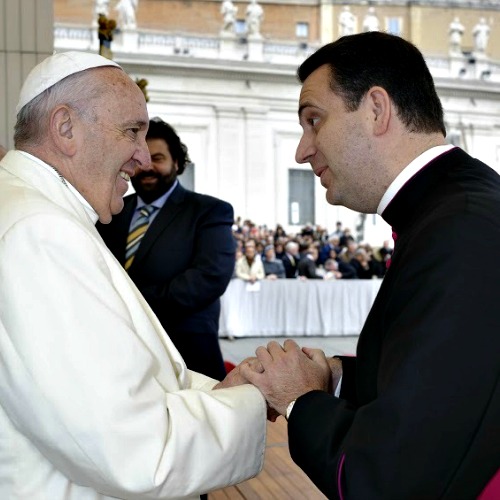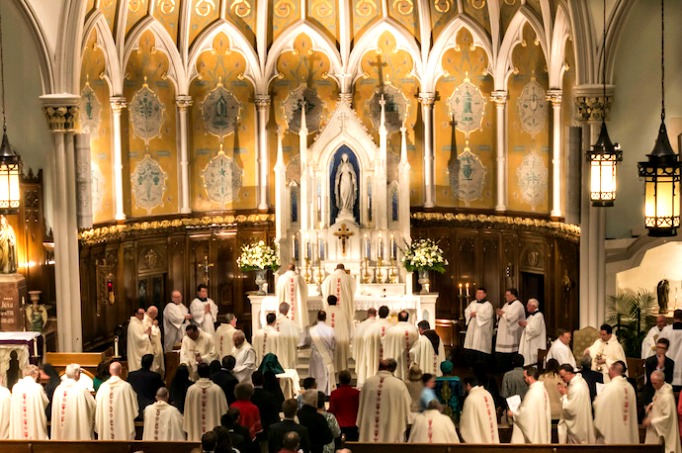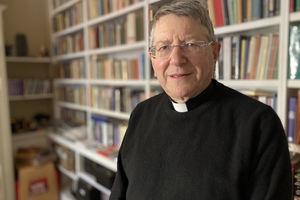The Untold Story of How the CDF Created the Anglican Ordinariate
Here's why the Congregation for the Doctrine of the Faith during Benedict XVI’s papacy realized that it had to take charge of the reunion project.

Benedict XVI gave a tremendous gift to the English-speaking world in 2009, when he finally realized a dream centuries in the making, and established a permanent canonical home for groups from the Anglican tradition seeking to enter the Catholic Church with the apostolic constitution Anglicanorum Coetibus.
Today, the Catholic Church has three Personal Ordinariates — informally known as the “Anglican Ordinariates” — that preserve the Anglican patrimony in their Catholic parishes, communities, and religious orders. These Personal Ordinariates have the only English form of the Roman Missal, promulgated by Pope Francis, called Divine Worship — an actual English form, not an English translation of the Latin Mass — written in traditional, poetic “Prayer Book” English. Each Personal Ordinariate covers a region of the globe (Oceania, the United Kingdom, and North America) and is headed by a bishop or ordinary who falls directly under the jurisdiction of the Congregation for the Doctrine of the Faith.
But how did the Vatican determine the solution for corporate unification with the Catholic Church had to be this structure called a “Personal Ordinariate?”
The story behind that answer can be found in an illuminating theological address on the CDF by Bishop Steven Lopes, who was tapped by Pope Francis to lead the Personal Ordinariate of the Chair of St. Peter (covering the U.S. and Canada) in 2016.
Bishop Lopes delivered his March 28 address “Unity of Faith in a Diversity of Expression: The Work of the Congregation for the Doctrine of the Faith” to a gathering of students and professors of the Institut für Historische Theologie, Liturgiewissenschaft und Sakramententheologie at the University of Vienna. The bishop is not a convert from Anglicanism, but is a lifelong Catholic whose work with the Congregation for the Doctrine of the Faith over 10 years immersed him in the Anglican patrimony and the project of corporate reunification between groups of Anglicans and the Catholic Church.

Lessons Learned from Past Attempts
As the CDF searched for how to respond in 2007 to so many requests for entire Anglican communities to join the Catholic Church, Bishop Lopes said they tried to find out how the CDF had handled this in the past. Archbishop Augustine DiNoia, the CDF undersecretary, found that from 1960 to 2005, there were at least “seven serious attempts to effect a corporate reunion of an Anglican Ecclesial Community with the Catholic Church.”
Why did these attempts fail? Well, the bishop indicated that some of these attempts failed because the CDF had trusted episcopal conferences and dioceses to carry out Rome’s proposals, and they found ways to kill these efforts instead for whatever reason — an age-old story in the 2,000 year history of the Church, but distressing none the less. Bishop Lopes explained it in these general terms:
[L]et us say, for example, that if the Holy See worked with a group of Anglicans to elaborate a proposal, and if that proposal was then entrusted to an Episcopal Conference for implementation, and if that Episcopal Conference then simply killed the proposal in committee, then a new approach might involve consultation with local Episcopal Conferences but reserve the actual oversight and direction of the implementation to the Holy See itself.
Or if a previous proposal for corporate reunion incardinated the converting clergy into local Dioceses, and if those priests were then reassigned or assimilated into the local Diocese so that they could not minister to their former communities and foster the particular identity of those communities, then a new approach might involve creating a juridical structure which would allow the incardination of priests and the canonical membership of laity so that their distinctiveness was not lost to assimilation into the much larger sea of Catholic life.
One tragic case is public knowledge enough that Bishop Lopes could speak of it: the petition of the Anglican Diocese of Amritsar, India to enter full communion with the Catholic Church over 1977 to 1982. The CDF’s decree authorized full communion also established a “robust liturgical provision” for them, drawn from the Book of Common Prayer and Roman sources. He added:
Sadly, this is one of the cases which really did not work, as the implementation of this decision was left to the local Conference of Bishops in India and someone at that local level decided that this liturgical provision was not necessary and so it was never implemented. Perhaps consequently, the clergy and faithful of that Anglican diocese of Amritsar faded away and only two priests and maybe 200 lay faithful were reconciled.
So, this is why the CDF during Benedict XVI’s papacy realized that it had to take full charge of the project of corporate reunion once groups of Anglicans and other Protestant ecclesial communities petitioned for full communion.
CDF Protects and Guarantees Catholicity
But rather importantly, as the bishop pointed out, the CDF stands as the guarantee that the liturgical traditions of the Personal Ordinariates are fully Catholic in every sense of the word. No one can say otherwise, or tell lifelong Catholics that the spiritual patrimony of the Personal Ordinariates is not for them, because the CDF stands behind it. Any Catholic who wishes to adopt this spiritual patrimony knows its Catholicity comes guaranteed by Rome.
The address makes clear that the CDF protects the meaning of Catholic — as “unity in a diverse expression” — from the forces that would eliminate Catholic diversity for flattening uniformity, and cultural assimilation. The CDF’s guarantee means the faithful of the Church, from now until Christ returns in glory, understand that the Anglican patrimony (and what in the Ordinariate is a truly restored English Catholic heritage that runs through the Anglican tradition all the way back to St. Augustine at Kent) is not just a treasure for the Personal Ordinariate, but is a treasure that belongs to “the whole Church.”
“The doctrinal office in the Church is therefore inexorably linked to the pastoral office, to the nurturing of real people in the faith and its right expression in the sacramental life,” Bishop Lopes said. “And that unity of faith does permit a vibrant diversity in the expression of that faith.”
Read the full lecture here.
- Keywords:
- anglican ordinariate
- bishop steven lopes
- congregation for the doctrine of the faith
- ordinariate
- personal ordinariate
- personal ordinariate of the chair of st. peter
- peter jesserer smith


















